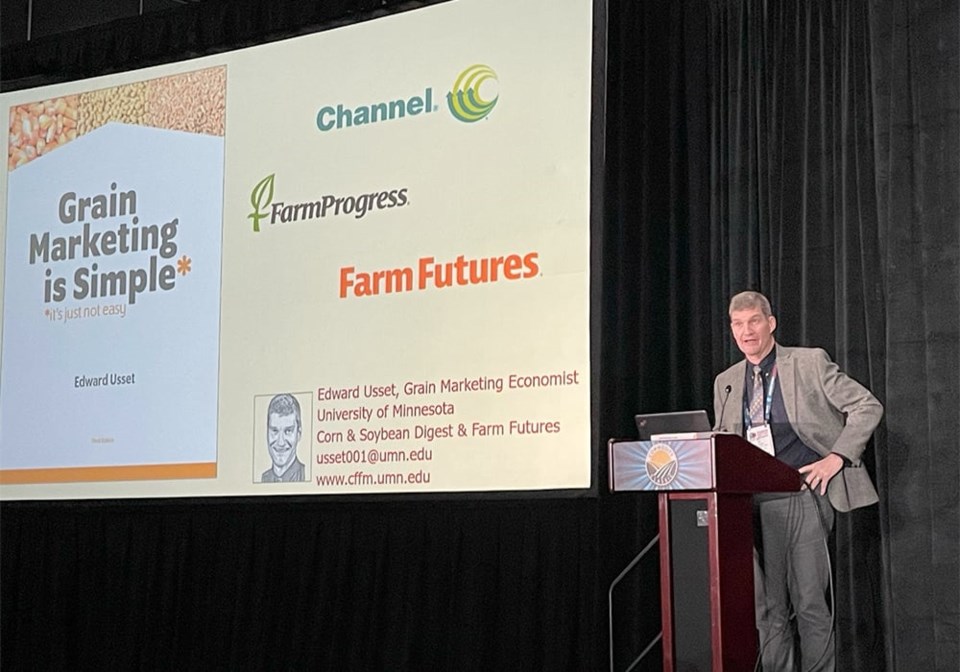HOUSTON, Texas — Old crop corn and soybean prices in the United States will likely rally this spring, according to an agricultural economist.
That would also be good for Canadian grain and oilseed prices if it happens.
The highest corn prices so far this year occurred during the first two days of January, and they have been heading lower since.
The odds of those prices remaining that high through spring is slim based on data compiled from the last couple of decades, according to Ed Usset, grain marketing economist with the University of Minnesota.
“In 16 of 20 years the corn market found a way to take out those highs set in January,” he told delegates attending the 2024 Commodity Classic.
Soybean prices are less reliable than corn, but there is also a good chance that market will take out the January high. It has done so in 17 of the last 20 years.
So, is corn heading back to US$5 per bushel?
“I don’t guarantee anything, but I think this is strong evidence that it could happen,” said Usset.
He has “no clue” what could cause the rally. He could offer up 10 reasons and it would be the 11th that would trigger the bull run.
But the upshot is that farmers with unpriced corn or soybeans in their bins might want to hold on a little longer and wait for better prices this spring.
He also thinks there is reason to be long-term bullish on grains and oilseeds because of the exploding renewable diesel industry.
Sixteen proposed new U.S. soybean crush plants will create more than 600 million bushels of new annual demand for the crop.
“I know things feel very bearish right now, but I like to think there is potential for this to create some turmoil in the market,” said Usset.
“This is an echo of the boom that occurred 15 years ago in the ethanol industry.”
That boom bolstered the price of corn, which in turn elevated prices for soybeans, wheat and just about every other crop farmers grow.
That begs the question — should farmers change their marketing strategy once the return to a bull markets arrives?
The short answer is no, said Usset.
He is a firm believer in growers knowing their cost of production and pricing 80 percent of their grain with pre- and post-harvest marketing efforts rather than accepting the harvest price.
Iowa corn growers who used that strategy achieved an average 37 cent per bu. premium over growers who took the harvest price between 1989 and 2002.
“That’s 37 cents a bu. on every bushel of corn produced over a 34-year period,” said Usset.
“You can see the advantage of pulling together pre- and post-harvest marketing.”
For soybeans, the advantage was nearly $1 per bu. and for hard red spring wheat in the Red River Valley it was 27 cents.
Usset analyzed the same data during the “golden age” of the ethanol boom between 2007 and 2013, comparing it to the seven-year periods before and after the boom.
The average price of Iowa corn during the seven-year boom was higher than the maximum price in the seven-years before and after the boom.
“That’s some good times,” he said.
The important thing to note is that the grower who used pre- and post-harvest marketing strategies outperformed those who took the harvest price in all three of those periods, said Usset.
Contact [email protected]

